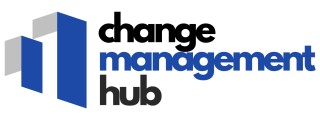-large-teaser.webp)
Understanding Technology Procurement in Change Management
The Crucial Role of Technology Procurement in Organizational Change
In the realm of change management, procurement plays a pivotal role in the transition to new technologies and processes. When an organization embarks on a journey of change, the technology procurement process is fundamental to securing the necessary tools and solutions that drive transformation. An effective procurement strategy ensures that the right technology is sourced, purchased, and implemented, aligning with the organizational goals and business requirements.Aligning Procurement with Business Objectives
Technology procurement is not merely about purchasing goods and services; it is a strategic endeavor that must align with the broader goals of the business enterprise. Services procurement and the management of services contracts are critical for ensuring that the technology procured supports the organization's objectives. This involves careful consideration of total costs, supplier relationships, contract management, and compliance with state contracts.Complexities of the Procurement Process
Navigating the intricacies of the procurement process requires an understanding of the various phases, from sourcing and vendor selection to contract negotiation and management. The procurement team must engage in a comprehensive analysis of procurement technology and chain management, ensuring that goods and services are acquired effectively and efficiently. They must consider both direct procurement for raw materials and indirect procurement for software and services, all while managing accounts payable efficiently. For those looking to enhance business efficiency, strategies such as enterprise workflow automation can offer significant benefits, streamlining procurement processes and improving overall effectiveness. Discover the benefits of enterprise workflow automation. In summary, understanding the intricacies of technology procurement is essential for successful change management. By aligning procurement processes with business objectives and tackling the complex dynamics involved, organizations can ensure a smoother transition during their change initiatives.Key Challenges in Technology Procurement
Common Obstacles in the Procurement Process
The path to successful technology procurement is riddled with challenges that must be navigated thoughtfully. In the world of procurement, these obstacles vary considerably but often align with similar themes. A fundamental issue is ensuring that the procurement process aligns with the business enterprise's specific technology needs. Misalignment here can lead to selecting unsuitable technology or service providers, affecting overall business efficiency and operations.
Balancing Cost with Quality
Cost considerations are paramount in the procurement of software and other technology solutions. While the urge to minimize expenses is strong, it's crucial to balance cost with the quality and capabilities of the goods or services procured. Focusing solely on budget constraints can lead to contracts with vendors who may not meet the business's long-term needs or support its strategic goals.
Vendor and Supplier Management
Managing relationships with suppliers and vendors is another key challenge. A lack of effective systems to track and evaluate supplier performance can lead to delays, increased costs, and poor quality of delivered technology goods or services. Procurement teams need reliable tools to ensure they select reputable vendors and maintain optimal communication throughout the purchasing process.
Compliance and Regulatory Requirements
Organizations must also consider the regulatory environment that governs procurement, especially when dealing with state contracts and state agencies. Compliance with procurement processes is essential to avoid legal issues and maintain credibility. These requirements can often be complex, requiring careful documentation and transparent sourcing practices.
Technology Integration
Integration of new technology with existing systems can be a daunting task. Ensuring that purchased technology solutions work seamlessly with current business processes is critical. This task demands precise specification of business requirements and careful consideration of the total lifecycle of the technology being procured.
For further insights into optimizing business operations through intelligent workflows, consider exploring this guide on enhancing efficiency through enterprise workflow automation.
Strategies for Effective Technology Procurement
Formulating Effective Procurement Strategies
Navigating technology procurement can seem like a daunting task, filled with intricate steps and numerous stakeholders. However, developing effective strategies is pivotal in managing this complexity. One strategy is to clearly define the business requirements from the outset. Understanding what the organization needs in terms of technology, be it software, goods, or services, helps streamline the entire procurement process. Furthermore, fostering a collaborative environment within procurement teams and state agencies is crucial. Engaging key suppliers and vendors early on and establishing a transparent communication channel enhances the procurement process. This ensures that everyone involved in the chain management understands the expectations, reducing the chances of miscommunication. Additionally, leveraging procurement technology tools can simplify the process significantly. These tools aid in managing procurement activities, from sourcing to accounts payable, making it more efficient. For instance, using e-procurement tools to manage supplier contracts and streamline purchase orders can reduce manual errors and speed up the process. Direct and indirect procurement strategies also need to be crafted with care. While direct procurement involves purchasing raw materials essential for production, indirect procurement covers services procurement and goods services that support business operations. Both types require careful planning to ensure that procurement processes align with business goals. Moreover, minimizing the risk of over-procurement by conducting thorough market research and reading state contracts diligently is essential. This helps in understanding the total value and cost implications associated with potential purchasing decisions, ensuring a strategic focus on the procurement process. For more insights on managing complex project roles, read about the roles project manager vs scrum master on our blog. In summary, effective procurement strategies should be built on a foundation of clear business requirements, leveraging technology, fostering collaboration, and understanding the procurement landscape. By doing so, businesses can significantly enhance their procurement management and drive successful technology adoption.The Role of Stakeholders in Technology Procurement
Engaging Stakeholders to Streamline Procurement
In the realm of technology procurement, particularly within the context of change management, the involvement of stakeholders plays a pivotal role. Their active participation ensures that the procurement process aligns with the overarching business requirements, ultimately leading to a better outcome.
Identifying Key Stakeholders
Stakeholders in technology procurement encompass a diverse group, ranging from procurement teams to accounts payable departments. They also include state agencies, vendors, and suppliers, all contributing to the multifaceted procurement processes. Understanding who these key players are is critical to navigating the complexities of technology procurement in change management.
Roles and Responsibilities
- Procurement Teams: As the champions of the procurement process, these teams are responsible for sourcing, negotiating, and finalizing contracts for goods and services. They ensure that all technological purchases meet the organization's business and strategic goals.
- Vendors and Suppliers: These partners provide the necessary goods, services, and software, playing a crucial role in fulfilling the organization’s procurement needs. Establishing clear supplier contracts facilitates smooth interactions and helps mitigate risks.
- State Agencies and Regulatory Bodies: For state contracts or direct procurement processes, engaging with state agencies is indispensable. Compliance with regulations and guidelines are critical aspects that impact the procurement process.
Communication and Collaboration
For successful technology procurement, continuous communication and collaboration between all stakeholders are essential. Regular meetings, transparent dialogue, and collective decision-making foster a trust-based environment and reduce potential conflicts. It is crucial that expectations regarding procurement technology, chain management, and purchasing norms are clearly articulated and agreed upon by all parties involved.
Feedback Mechanisms
Having robust feedback mechanisms ensures that any discrepancies or challenges encountered can be promptly addressed. This iterative feedback loop not only improves procurement processes but also enhances total supply chain management. Efficient feedback channels also allow for better vendor management and strengthen the collective understanding of procurement obligations and state contracts.
Engaging stakeholders effectively is not just about fulfilling immediate business needs but also about setting the stage for continual improvement and strategic alignment with the organization's long-term goals. By empowering stakeholders through defined roles, collaborative communication, and feedback loops, technology procurement in change management can lead to beneficial outcomes for all parties involved.
Best Practices for Successful Technology Procurement
Implementing Strategies for Sustainable Technology Procurement
In the realm of technology procurement, best practices play a crucial role in driving successful outcomes. These practices ensure that the procurement process is efficient, transparent, and aligned with the business objectives. Let's delve into some of the best practices that can enhance technology procurement efforts.
- Comprehensive Needs Assessment: Before initiating the procurement process, it's essential for procurement teams to conduct a thorough needs assessment. This involves understanding the specific business requirements and aligning technology procurement with the overall strategy of the organization. By clearly defining what is needed, businesses can avoid unnecessary purchases and ensure that they procure technology that truly adds value.
- Engaging Suppliers and Vendors: A proactive approach to engaging with suppliers and vendors is beneficial. Regular communication allows for a clearer understanding of what suppliers can offer, helping to negotiate better terms and conditions in services contracts. Additionally, fostering good relationships with suppliers can lead to more favorable state contracts and a more reliable supply chain.
- Utilizing Procurement Technology: Leveraging tools like procurement software can streamline the entire procurement process. This technology aids in managing contracts, tracking purchases, and ensuring compliance with state agencies’ regulations. It also improves transparency in the procure pay cycle and helps manage accounts payable effectively.
- Risk Management: Identifying potential risks early in the procurement processes can mitigate issues that may arise later. This includes evaluating the vendor's reliability, the potential for technological obsolescence, and the total cost of ownership for goods and services.
- Compliance and Ethical Considerations: Adhering to ethical sourcing practices is paramount. Businesses need to ensure procurement activities are compliant with regulations and state legislation. This fosters trust in the procurement process and protects the company's reputation.
Adopting these best practices not only enhances the efficiency of the procurement process but also aligns technology sourcing with an organization’s long-term goals. Effective procurement isn't just about purchasing the right technology; it's about building a sustainable framework that supports the business enterprise over time.
Case Studies: Successful Technology Procurement in Change Management
Case Study Insights for Navigating Procurement Complexities
Examining real-world applications of technology procurement within change management can illuminate best practices and pitfalls to avoid. Businesses that have navigated these waters demonstrate how strategic approaches can strengthen procurement processes. Reviewed here are two case studies highlighting effective frameworks and strategies.
Streamlined Processes in Public Sector Procurement
A state agency was faced with the challenge of overhauling its supply chain for procuring software. The existing system was rigid, leading to delays and high costs. The agency adopted a procurement technology solution that automated processes and improved supplier engagement. By utilizing specialized tools and engaging with stakeholders effectively, the agency managed to decrease procurement lead times by 30% and cut costs by 15%.
This transformation was achieved by establishing a dedicated procurement team that worked closely with vendors to understand business requirements and secure favorable contracts. By focusing on indirect procurement, the agency effectively managed its budget for complex technological purchases.
Empowering a Business Enterprise Through Direct Procurement
A global business enterprise sought to enhance its competitive edge by streamlining its procurement processes for raw materials. Facing issues with scattered vendor management, the company adopted a centralized procurement model focusing on direct procurement strategies. The aim was to ensure consistent supply chain efficiency and optimal contract terms.
By bringing in procurement experts and emphasizing a source-to-pay philosophy, the company solidified relationships with its suppliers, leading to more reliable service contracts. The implemented strategy resulted in a 20% increase in the company’s purchasing efficiency, reduced goods service costs, and a newfound agility in responding to market changes.
These case studies underscore how integrating robust management strategies and collaborative sourcing approaches can lead to successful technology procurement, significantly impacting organizational efficiency and cost-effectiveness.












